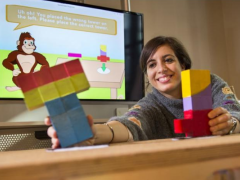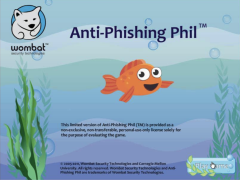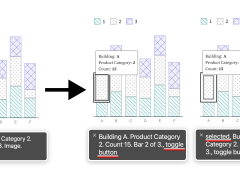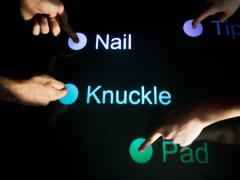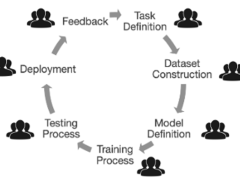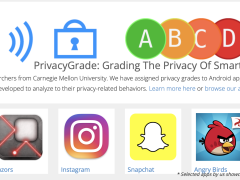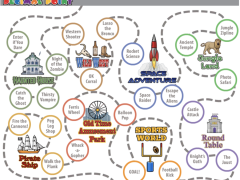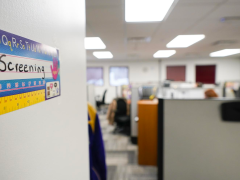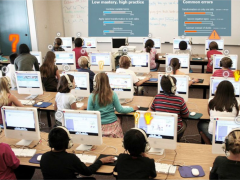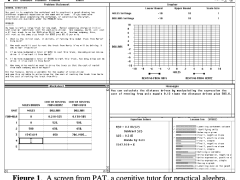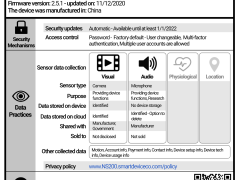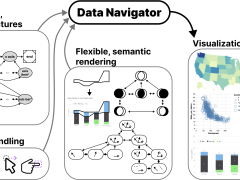Tiramisu Supported Public Transit Riders and Research
Impact: 75,000 riders used this real-time mobile app
We worked with Pittsburgh transit and riders to develop a mobile application that made riders the co-creators of the service they desired. By sharing GPS location traces as the riders commuted, they collectively produced real-time arrival information that benefited all transit riders.
Our app provided a space where we could explore many different ideas, including how to motivate transit riders to share information, how mobile transit information impacts accessibility and supports more opportunistic travel for people with disabilities, and how an adaptive service that learns the patterns of users' rides can personalize their experience.
We developed a mobile, real-time arrival app for public transit that reduced the effort and uncertainty of travel, especially for people with disabilities.
This work led to...
- The Tiramisu app. Italian for "pick me up," the Tiramisu app was available in the Google and Apple app stores and supported 75,000 unique transit riders during its 10-year run in Pittsburgh. This was notably early work in this space, and for reference, the Port Authority of Allegheny County added on-bus tracking 7 years later in 2016.
- Using crowdsourced transit data to benefit the community. The team designed and built a system where users could use their mobile phones to report bus fullness and trace transit vehicles while onboard. Over the years, users provided over 200,000 crowdsourced contributions to the app, which directly benefited their fellow Pittsburgh travelers.
- A decade of transit accessibility research. The team learned that access to mobile information about specific buses — bus arrival time and seat availability — made it easier for travelers with disabilities to have awareness of upcoming buses and engage in opportunistic travel, reducing barriers and effort during trips. In later work, the team also showed that learning a rider's bus route preferences could be used to improve their experience. Version 3 of the app pre-filtered which transit information to show, thereby lowering user interaction effort for everyone, including screen reader users.
- Awards. Tiramisu received an innovation award from the Federal Trade Commission for work that improves accessibility. It also won second place in the 2011 “Best New Innovative Products, Services, or Applications” category from the Intelligent Transportation Society of America (ITSA).
Supported by: The National Institute on Disability, Independent Living, and Rehabilitation Research (NIDILRR), within the Administration for Community Living (ACL) of the Department of Health and Human Services (HHS), previously as the National Institute on Disability and Rehabilitation Research (NIDRR) within the Department of Education. Additional support was provided by the US Department of Transportation and the Traffic21 Institute at Carnegie Mellon University, a program developed with the support of the Hillman Foundation.
Timing: 2009-2022
Related work:
- Tiramisu Transit website
- "Field Trial of Tiramisu: Crowd-sourcing Bus Arrival Times to Spur Co-design" paper
- "Planning Adaptive Mobile Experiences When Wireframing" paper
Researchers: John Zimmerman, Aaron Steinfeld, and team
Research Areas: Accessibility & Assistive Technology, Social Computing
Looking at Additional HCII Impacts...
NoRILLA Interactive Mixed-Reality Science for Kids
Our novel, mixed-reality intelligent science stations bridge the physical and virtual worlds. Millions of children and families across the US are learning more science and improving their critical thinking skills after predicting, observing and explaining experiments with our patented system at their schools and museums.
Protecting Millions of People from Phishing Scams
We studied the social aspects of phishing attacks and protected millions of people through education and training. This work led to new educational methods to raise awareness, effective anti-phishing warnings, and algorithmic detection of phishing attacks.
Tiramisu Supported Public Transit Riders and Research
Years before the public transit buses in Pittsburgh had GPS location trackers, we were exploring how riders could be the co-creators of mobile transit info. During this 10 year research project, this app made it easier for travelers with disabilities to engage in opportunistic travel and benefited 75,000 unique transit riders.
Developing Novel Interfaces for Livestreamed Gaming
Livestream gaming viewers are limited in the ways they can participate, but this team found that designing a better experience for livestreams has a variety of benefits for audiences worldwide.
Creating Accessible Visualizations with Chartability
The Chartabilty framework has empowered people around the world to recognize the parts of a data visualization that produce barriers for people with disabilities. It has contributed to dozens of design languages, visualization guides, accessibility curriculum at universities, and the data journalism seen on news websites.
TapSense Improved Touch Detection on Millions of Smartphones
We trained smartphones to reliably detect four different touchscreen inputs – for example, a tap by a finger pad as compared to a knuckle – which created opportunities for new interactions and features.
Supporting Developers So They Can Build More Responsible AI
We conducted the first studies with industry practitioners to understand the challenges they face when building responsible AI systems. Our tools and methods are now supporting developers around the world.
Grading Your Smartphone Apps on Their Privacy Practices
We created a model that analyzed over 1 million smartphone apps on their privacy and data collection practices, and then assigned them a public-facing privacy grade. This easy-to-follow grading system raised public awareness and led to improved privacy practices from several app developers.
Improved Math Mastery with the Decimal Point Game
We explored the learning analytics behind our digital learning game to see how student learning responds to curriculum changes to the game. Over the past 10 years, over 1,500 students have benefited from the Decimal Point game and curriculum materials.
Understanding the Impacts of AI in Child Welfare
We conducted the first field studies to understand how child welfare workers incorporate AI-based recommendations into their decision-making, which had far-reaching policy impacts.
Designing Teacher-AI Collaboration Systems
Hundreds of elementary and middle school students across the US have learned more as a result of our work on real-time, teacher-AI collaboration systems in K-12 classrooms.
Millions Learned More Math with Our AI Tutor
Millions of middle school and high school students across the US have learned more math as a result of our decades of work with AI-based cognitive tutoring systems.
Human-Centered Privacy for the Internet of Things
As more gadgets become “smart” things and the Internet of Things (IoT) expands to tens of billions of connected devices, we want consumers to be aware of what their devices are doing with their personal data.
Zensors Turns Cameras Into Smart Sensors
In one application installed at the Pittsburgh International Airport in 2019, Zensors use existing cameras as powerful general-purpose sensors to provide wait time estimates for the security line, which benefits almost 10M PIT travelers per year.
Accessible Visualization Tooling with Data Navigator
A visual labeled as “an image of a bar chart” or that requires a mouse hover to display important info does not support all users. We created the Data Navigator system to give developers a flexible foundation for designing and building more inclusive data experiences.


